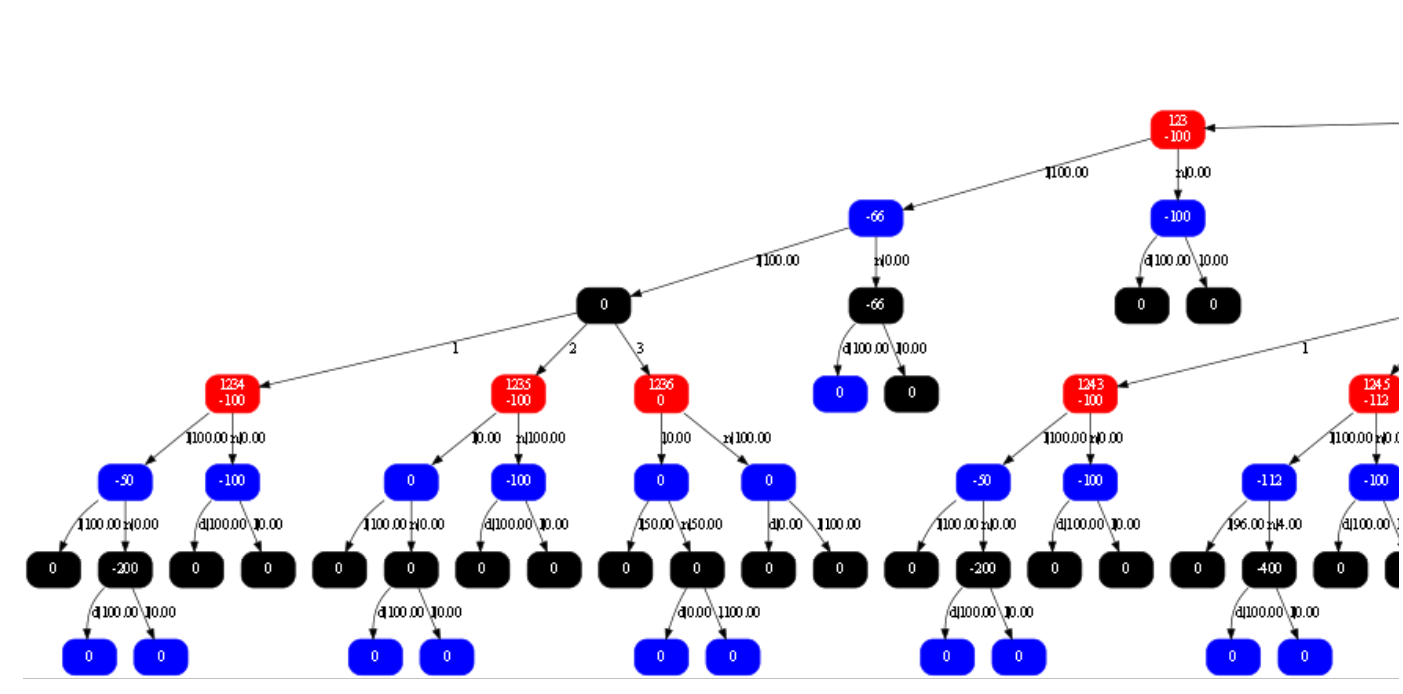We provide a simple example of Leduc Poker about how to build a game tree, how to use MCCFR algorithms to get the Nash equilibrium strategy, and how to evaluate the strategy exploitability by the best response algorithm.
- Supported Training methods:
- External Sampling
- Chance Sampling
- For C++11 support
- GraphViz software
- Clone repositories:
$ git clone https://github.com/zqbAse/PokerAI_Sim.git
- Compile and Run:
$ cd zqbAse/PokerAI_Sim
$ g++ blueprint.cpp -o blueprint.o -std=c++11
$ ./blueprint.o├── Tree # game tree code
│ ├── Node.h # data structure of every node in game tree
│ ├── Bulid_Tree.h # traverse every possible hole card, community cards and legal actions to bulid the game tree
│ ├── Exploitability.h # it compute the exploitability of game tree policy
│ ├── Save_load.h # it can save game tree policy to a file and load file to bulid a game tree
│ └── Visualize_Tree.h # Visualize game Tree
│
├── Util #
│ └── Randint.h # the class is to generate random number
│
├── img # game tree figure
│
├── Poker # the foundation class of the poker game
│ ├── Card.h # every card class, it's id range from 0 to 5, which map figure 1 to 6
│ ├── Deck.h # deck class of cards, it contains 6 cards
│ ├── Engine.h # it compute game result, judging win person and the person can get the number of chips
│ ├── Player.h # player class,it's attributes contain initial chips, bet chips, small or big blind
│ ├── Table.h # it's attributes contain players, pot and community cards
│ └── State.h # it is game state, contain every players infoset
│
└── blueprint.cpp # it is main algorithm of mccfr
the foundation class of the poker game.
- every card class, it's id range from 0 to 5, which map figure 1 to 6.
- deck class of cards, it contains 6 cards.
- it compute game result, judging win person and the person can get the number of chips.
- player class,it's attributes contain initial chips, bet chips, small or big blind. it's functions contain raise, call and fold.
- it's attributes contain players, pot and community cards.
it is game state, contain every players infoset.
- constructor function contian deal every player hole card, three community cards and have mapped (hole card,community cards) to a branch in chance node.
- function reset_game() is reset game to initial game.
- function move_to_next_player() is that after a player takes action, turning to next player who can take action.
- function reset_betting_round_state() is to control raise chips and check situation.
- function is_terminal() is to judge game over, including one player remained or river round over.
- function payout(int i) is to compute player i winning or losing chips.
- function apply_action(char actionstr) is that when a player take action, game state is change.
- function increment_stage() is that when every game round over, turning to next round.
- function legal_actions() is to return legal actions in current state.
- data structure of every node in game tree.
- traverse every possible hole card, community cards and legal actions to bulid the game tree.
- it compute the exploitability of game tree policy.
- save or load the game tree policy. it can save game tree policy to a file and load file to bulid a game tree.
- Visualize game Tree.After the game run out, current folder will generate a 'blueprint_sim.stgy' file.
$ cd GraphViz/bin
$ dot -Tpng blueprint_sim.stgy > temp.png- temp.png is the game tree.
